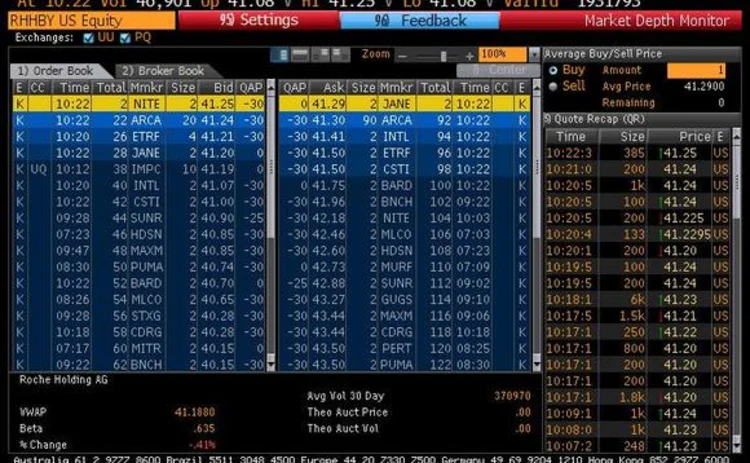GreySpark Study Yields Pre-Trade Risk Best Practices

According to GreySpark, the paper ─ Best Practices in Pre-trade Risk Controls 2014 ─ provides banks with a guide that enables them to develop and implement barriers surrounding their e-trading systems in order to prevent similar situations to the Knight Capital fiasco on the August 1, 2012, when the New York-based market maker suffered losses of some $440 million due to the accidental release of test software code into its production environment.
The consultancy claims that investment banks are taking on increased levels of risk during the course of their business as they look to move into new markets and asset classes, even though the complexity of electronic trading systems continues to rise. Recent examples of malfunctions within e-trading execution platforms like those that affected Knight Capital, and the Flash Crash of May 6, 2010, which saw the Dow Jones Industrial Average lose approximately 1000 points (9 percent) only to recover those losses within minutes, highlight the need for better risk controls ─ specifically on a pre-trade basis ─ which the report focuses on.
Checklist
The study, published on August 8, provides tier-I and tier-II sell-side firms with what it calls a "checklist-like set of controls that can be tailored to the specific requirements of different types of sell-side institutions."
The firm's recommended pre-trade risk controls include details about the design and implementation of execution platforms, guidelines on managing pre-trade risks associated with both sell-side capital markets agency flow businesses and principal flow businesses, and reviewing how risk limits should be implemented across multiple, independent pre-trade components utilized by both models. It also explores sell-side pre-trade risk industry best practices and explains how such controls can be applied to order flow risks within banks. GreySpark insists that the majority of banks can adopt these pre-trade risk controls with only minor modifications to their technology stacks.
The paper provides banks with a guide that enables them to develop and implement barriers surrounding their e-trading systems in order to prevent similar situations to the Knight Capital fiasco.
Only users who have a paid subscription or are part of a corporate subscription are able to print or copy content.
To access these options, along with all other subscription benefits, please contact info@waterstechnology.com or view our subscription options here: https://subscriptions.waterstechnology.com/subscribe
You are currently unable to print this content. Please contact info@waterstechnology.com to find out more.
You are currently unable to copy this content. Please contact info@waterstechnology.com to find out more.
Copyright Infopro Digital Limited. All rights reserved.
As outlined in our terms and conditions, https://www.infopro-digital.com/terms-and-conditions/subscriptions/ (point 2.4), printing is limited to a single copy.
If you would like to purchase additional rights please email info@waterstechnology.com
Copyright Infopro Digital Limited. All rights reserved.
You may share this content using our article tools. As outlined in our terms and conditions, https://www.infopro-digital.com/terms-and-conditions/subscriptions/ (clause 2.4), an Authorised User may only make one copy of the materials for their own personal use. You must also comply with the restrictions in clause 2.5.
If you would like to purchase additional rights please email info@waterstechnology.com
More on Emerging Technologies
The next phase of AI in capital markets: from generative to agentic
A look at some of the more interesting projects involving advanced forms of AI from the past year.
Market data costs defy cyclicality
Trading firms continue to grapple with escalating market data costs. Can innovative solutions and strategic approaches bring relief?
As trading firms embrace AI, so do hackers
According to a Google cybersecurity report, cybercriminals are turning to AI to sharpen their attacks.
AI & data enablement: A looming reality or pipe dream?
Waters Wrap: The promise of AI and agents is massive, and real-world success stories are trickling out. But Anthony notes that firms still need to be hyper-focused on getting the data foundation correct before adding layers.
Waters Wavelength Ep. 343: Broadridge’s Jason Birmingham
This week, Jason Birmingham of Broadridge talks with Tony about the importance of fundamentals as technology rapidly evolves.
Data standardization is the ‘trust accelerator’ for broader AI adoption
In this guest column, data product managers at Fitch Solutions explain AI’s impact on credit and investment risk management.
BNY inks AI deal with Google, Broadridge moves proxy voting to AWS, Expero delivers ICE market data, and more
The Waters Cooler: TSX Venture Exchange data hits the blockchain, SmartTrade acquires Kace, and garage doors link to cloud costs in this week’s news roundup.
Everyone wants to tokenize the assets. What about the data?
The IMD Wrap: With exchanges moving market data on-chain, Wei-Shen believes there’s a need to standardize licensing agreements.








